Seaweeds of the South African South Coast


Order Ceramiales
Family Rhodomelaceae
Neosiphonia sertularioides (Grateloup) K.W. Nam & P.J. Kang 2012: 87, figs 51-53
Plants creeping, the apices ascending, up to 1(-2) cm tall. Axes attached by unicellular haptera cut off from the pericentral cells. Laterals of exogenous origin, at intervals of 4 – 7 segments, in principle indeterminate, subtended by a trichoblast. Trichoblasts unbranched. Segments with four pericentral cells, without cortication. Segments to ca. 100 µm in diameter, in creeping filaments about 1.5 times longer than broad. In ascending filaments segments shorter than broad, the apical cells ca. 12.5 µm in diameter.
Tetrasporangia in long series subapically, shifting their position at intervals of ca. 4 segments. Sporangia ca. 55 µm in diameter, with only two long cover cells. Male stichidia at intervals of 2 segments. Stichidia accompanied by a single or once-forked sterile filament. Stichidia ca 100 x 25 µm, without sterile cells at the top. Cystocarps nearly globose, about 250 µm in diameter at maturity, ostiole surrounded by small cells (ca. 12.5 µm).
Neosiphonia differs from Polysiphonia in a number of characters (see Kim & Lee 1999). Morphological characters that are relatively easy to discern include: (in Neosiphonia) lateral branches arising on successive segments, erect indeterminate branches developing from the main axes and tetrasporangia in spiral series. In Polysiphonia lateral branch initials are separated by one to several segments, erect branches develop from a prostrate basal system, and tetrasporangia are “arranged in straight series on determinate branches” (Kim & Lee 1999).
Collections, ecology and regional distribution
Recorded from Jongensfontein to Double Mouth (26-43). Intertidal, including rock pools, on encrusting corallines, and in Scutellastra cochlear (limpet) gardens.
World distribution: virtually worldwide on temperate and tropical coasts (Guiry & Guiry 2016).
Type locality: Cette (Sète, Hérault), France (Womersley 1979).
Note 1. formerly known as Polysiphonia flaccidissima Hollenberg (Mamoozadeh & Freshwater 2012).
Note: 2. A smaller form of this species is sometimes found growing epizoically on the south coast. Thalli are repent (creeping), with ascending apices up to 2.5 mm tall, and primary laterals every 7-12 segments. Trichoblasts often only at the bases of laterals, usually unbranched, sometimes once or twice branched. Tetrasporangia ca. 45 µm in diameter, fertile segments with only two long cover cells. Other reproductive structures not seen. Other dimensions similar to our specimens of N. sertularioides as described above.
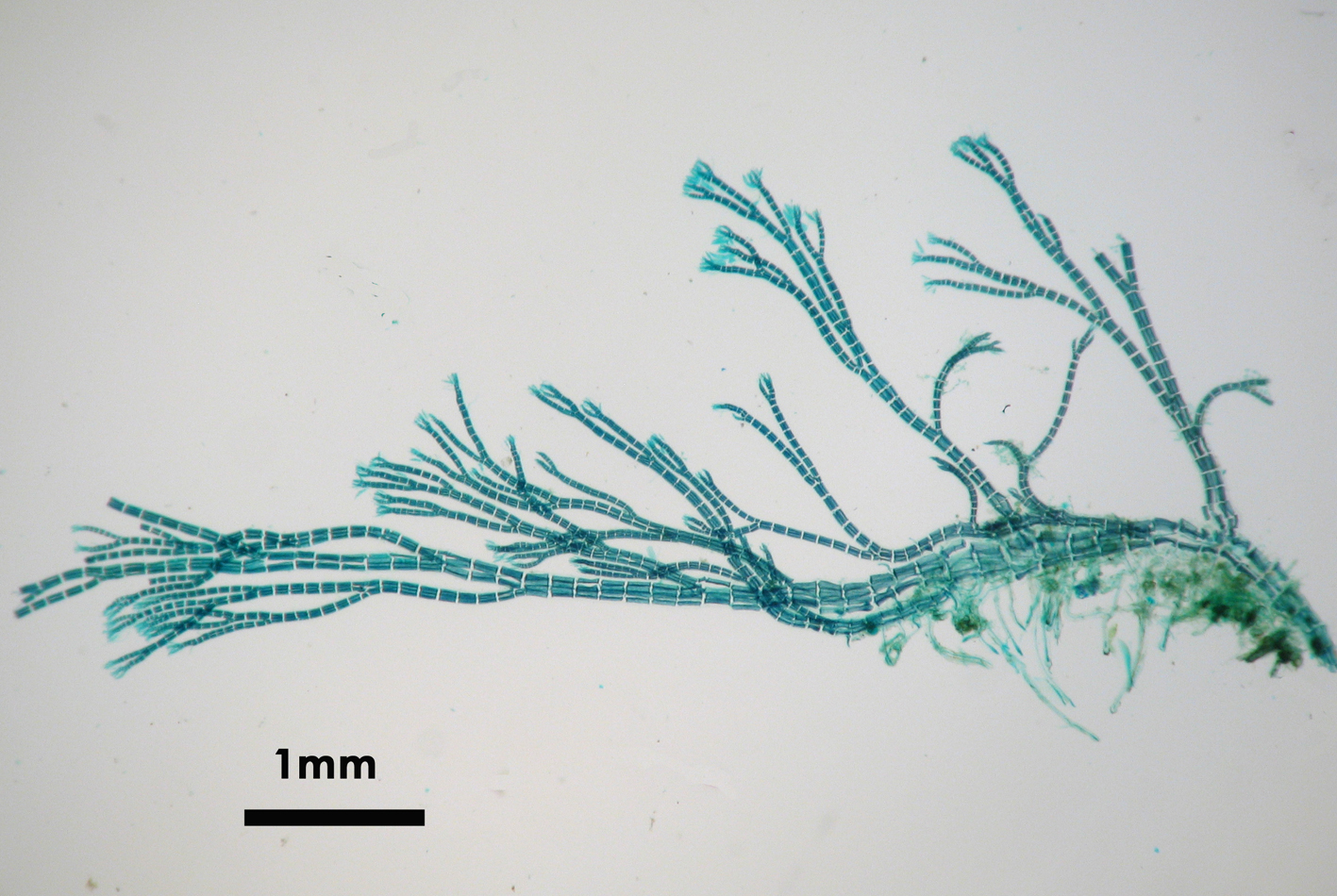
Neosiphonia sertularioides. Whole mount (stained slide).
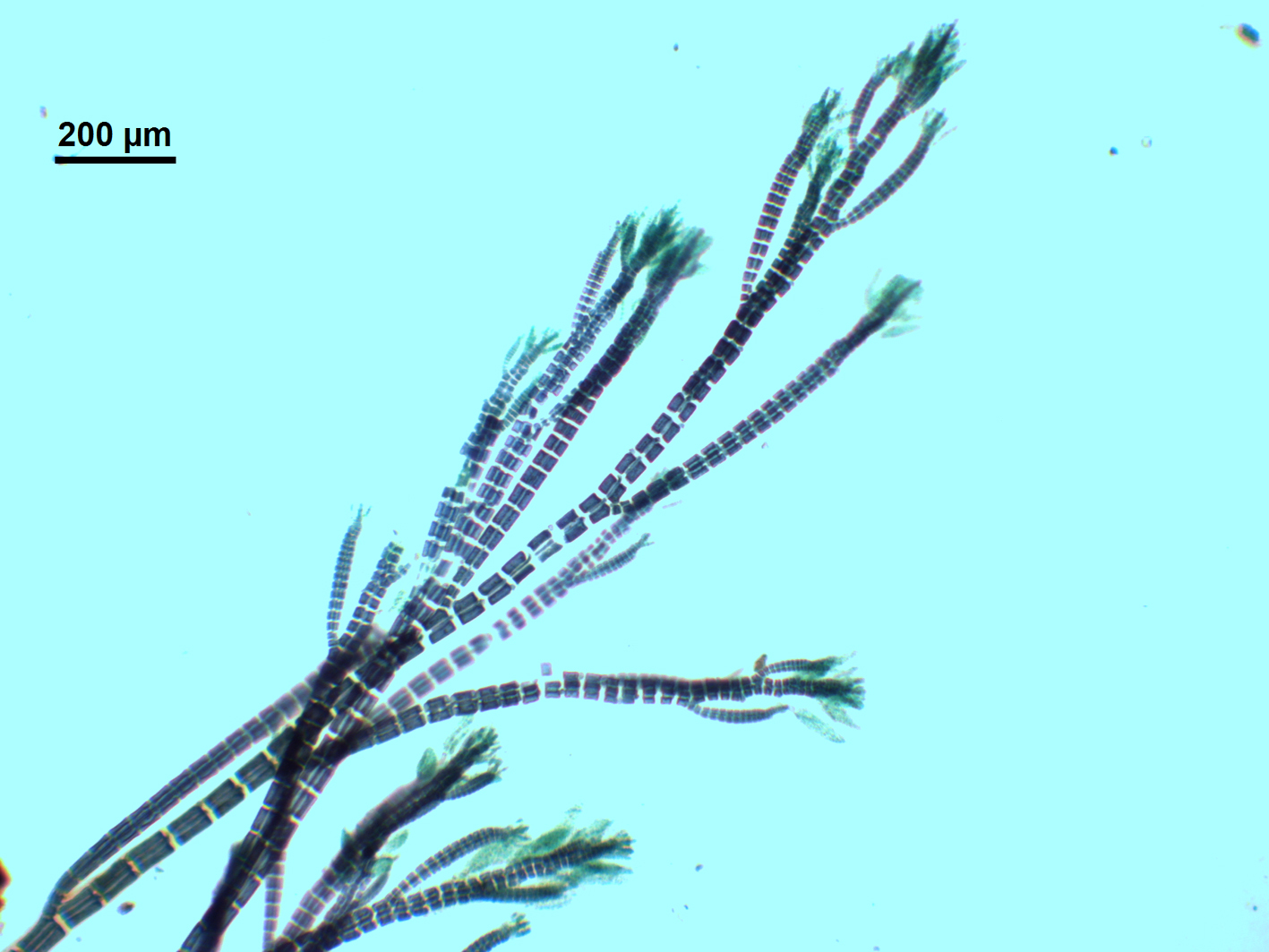
Neosiphonia sertularioides. Apices of male thallus (stained slide).
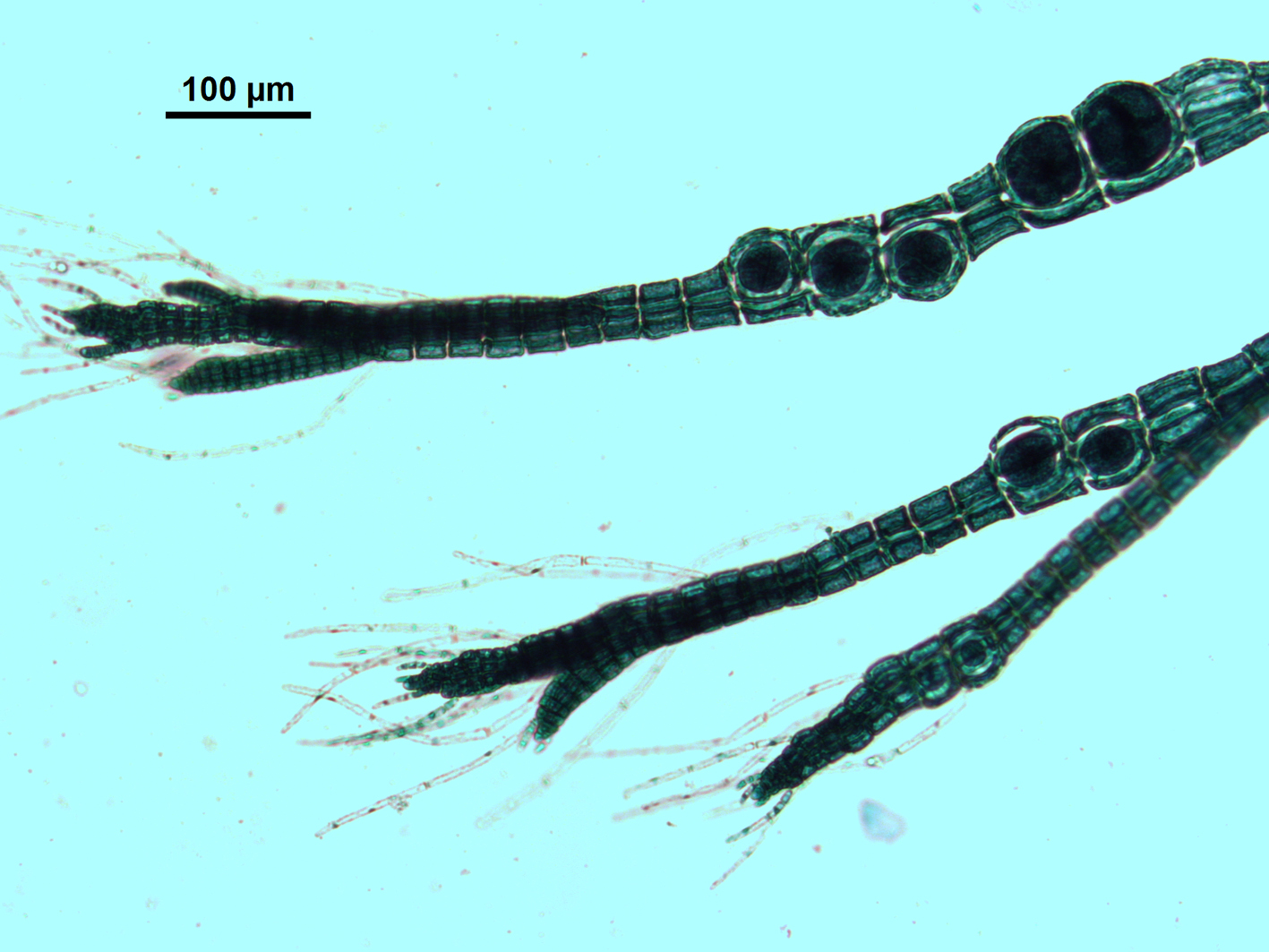
Neosiphonia sertularioides. Apices of tetrasporangial thallus (stained slide).
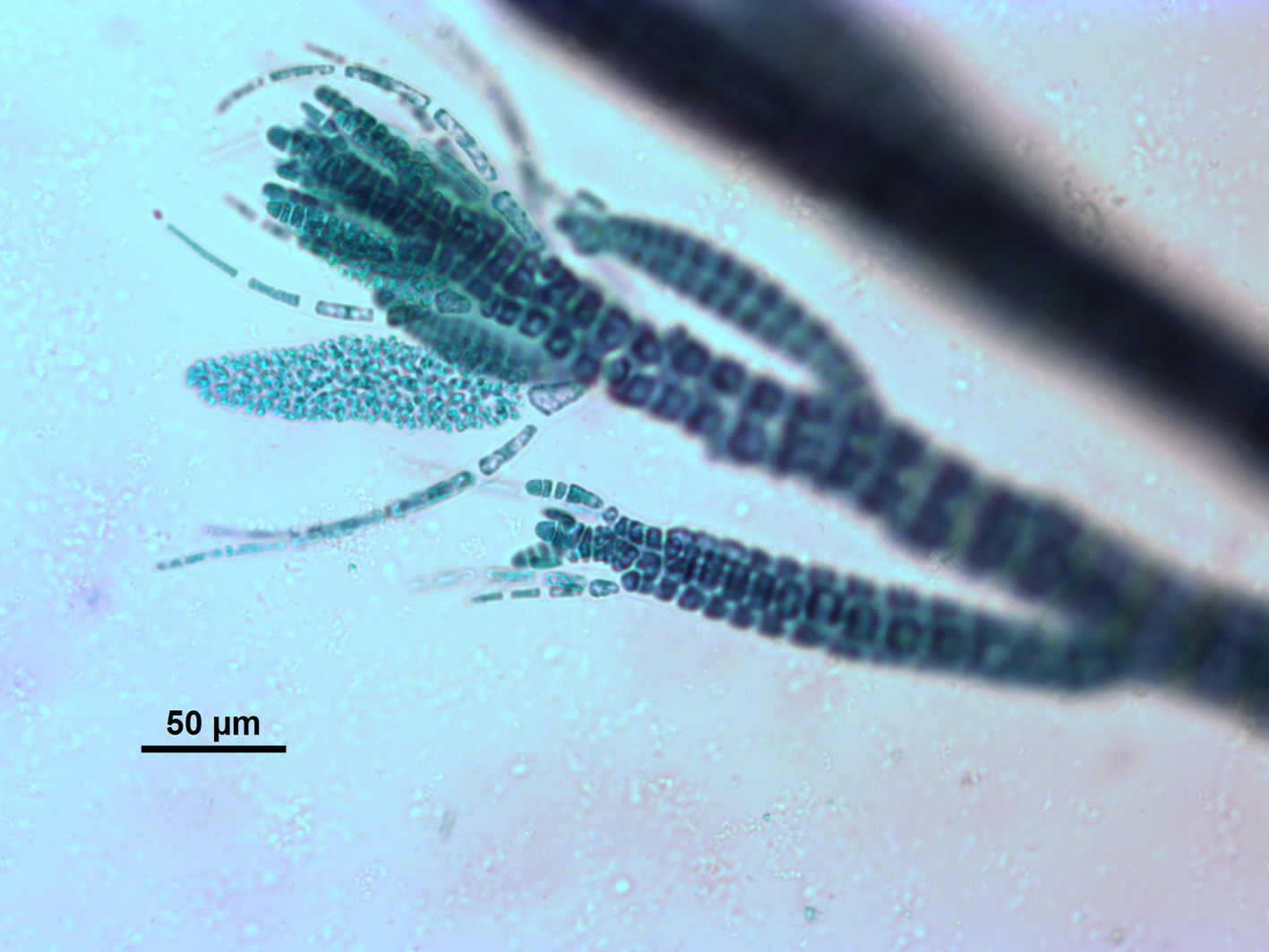
Neosiphonia sertularioides. Detail of spermatangial stichidia( stained slide).
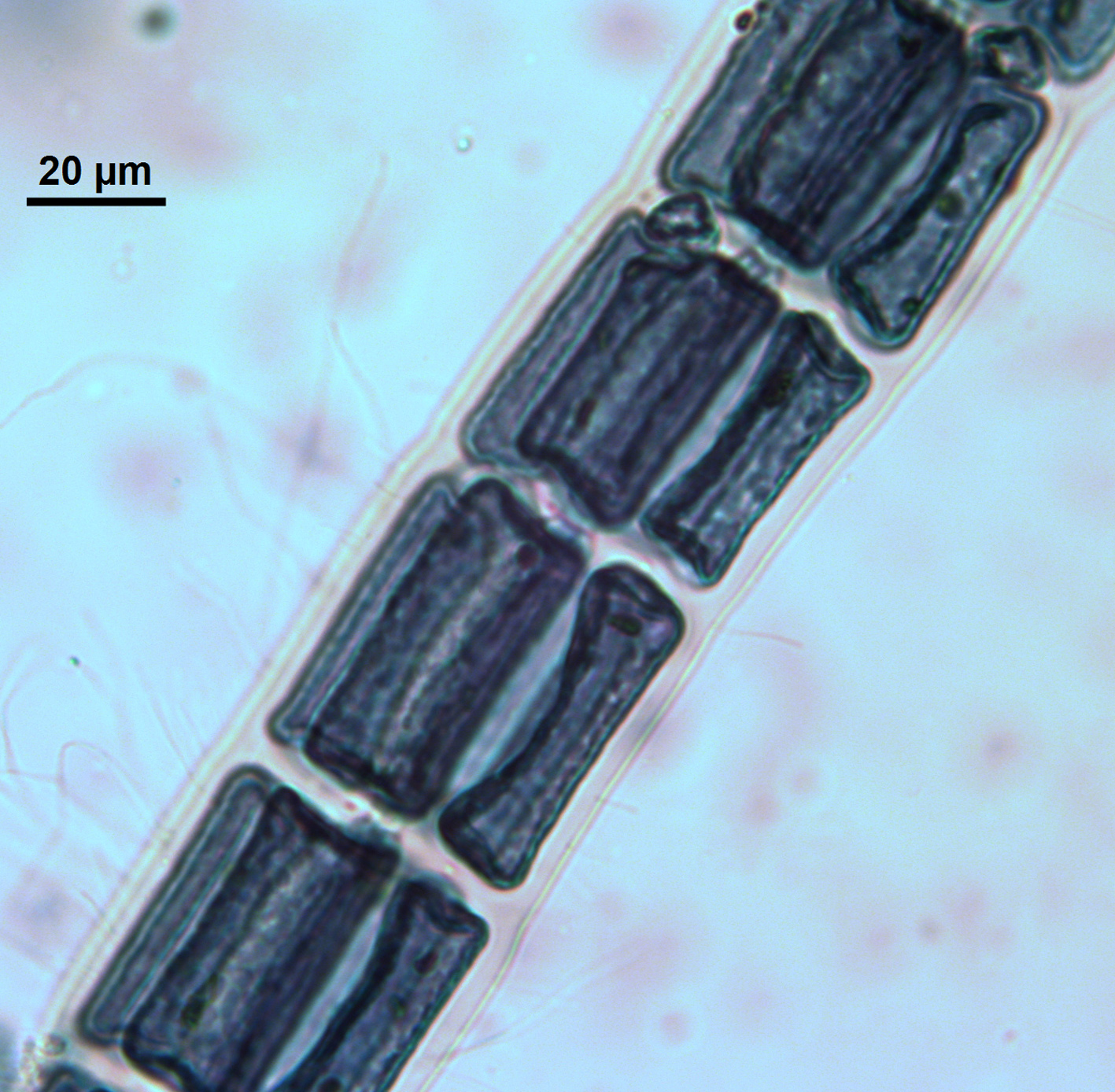
Neosiphonia sertularioides. Detail of cells. (stained slide).
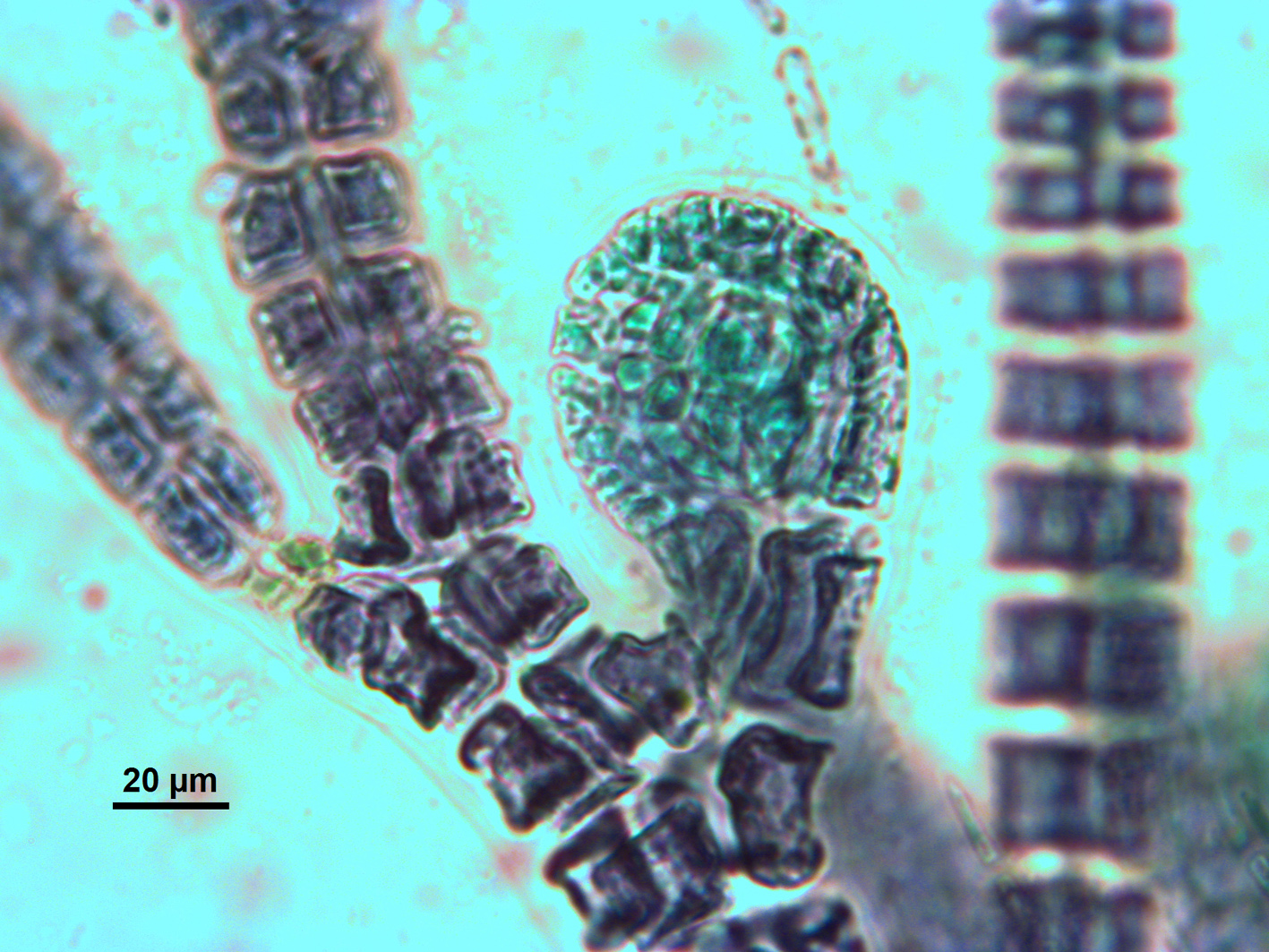
Neosiphonia sertularioides. Young cystocarp (stained slide).
References Neosiphonia sertularioides
Guiry, M.D. & Guiry, G.M. 2016. AlgaeBase. World-wide electronic publication, National University of Ireland, Galway. http://www.algaebase.org; searched on 07 June 2016.
Kim, M.-S. & Lee, I.K. 1999. Neosiphonia flavimarina gen. et sp. nov. with a taxonomic reassessment of the genus Polysiphonia (Rhodomelaceae, Rhodophyta). Phycological Research 47: 271-281.
Mamoozadeh, N.R. & Freshwater, D.W. 2012. Polysiphonia sensu lato (Ceramiales, Florideophyceae) species of Caribbean Panama including Polysiphonia lobophoralis sp. nov. and Polysiphonia nuda sp. nov.. Botanica Marina 55(4): 317-347.
Nam, K.W. & Kang, P.J. 2012. Algal flora of Korea. Volume 4, Number 4. Rhodophyta: Ceramiales: Rhodomelaceae: 18 genera including Herposiphonia. pp. [1-6], 1-178, figs 1-102. Incheon: National Institute of Biological Resources.
Womersley, H.B.S. 1979. Southern Australian species of Polysiphonia Greville (Rhodophyta). Australian Journal of Botany 27: 459-528, 14 figs.
Cite this record as:
Anderson RJ, Stegenga H, Bolton JJ. 2016. Seaweeds of the South African South Coast.
World Wide Web electronic publication, University of Cape Town, http://southafrseaweeds.uct.ac.za; Accessed on 07 January 2026.